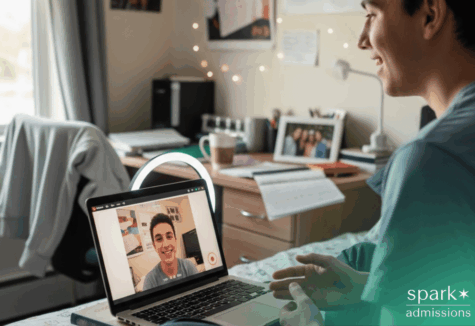- Blog
- > College Admissions
International Policy Shifts: How New Visa Restrictions Are Reshaping the College Admissions Landscape
- Dr. Rachel Rubin
- | October 14, 2025

In recent months, the same anxious question from families investing in international education comes up: “Do the new visa restrictions make it easier or harder for my child to get into a U.S. college?” This is no longer a theoretical inquiry. Major federal changes in visa policy, travel bans, and evolving immigration rules are already affecting international student flows, enrollment patterns, and how universities strategize admissions.
Having worked in college admissions for over two decades, Spark Admissions knows that international policy shifts don’t just affect visa holders; they ripple outward, affecting domestic applicants, institutional finances, and the global standing of U.S. higher education.

International Student Realities in 2025
To understand where things stand, we need to look at the latest data and recent policy shifts.
Fewer New Visas, Steep Declines
- From January to April 2025, issuance of F-1 student visas was down 12 percent compared to the same period in 2024. In May 2025, that drop ballooned to 22 percent year-over-year.
- Meanwhile, the U.S. has paused scheduling new student visa interviews at many embassies to expand social media vetting.
- A June 2025 executive order suspended visa issuance beginning June 9 for citizens of 19 countries, especially affecting F, J, and M visa categories.
- The administration’s new rules also empower ICE to terminate student SEVIS status if they detect “failure to comply” or vague violations of nonimmigrant terms.
This adds a layer of uncertainty for prospective and current international students. Even if you hold a visa already, the environment is less stable than in previous years.
Yield Gaps Are Still Stark
Before these changes, the challenge of converting offers into enrollments was already evident. Consider:
- University of Illinois Urbana-Champaign: ~19.95% of international admits matriculated vs. ~42.62% in-state.
- Purdue: ~24.3% international yield vs. ~52.4% in-state.
- Penn State: just ~9.5% of admitted international students enroll, versus ~40.7% of in-state students.
That trend suggests that even in normal times, many international admits don’t make it to campus. Now, visa and travel friction may widen that gap.
Policy Changes That Impact International Students
Travel Bans, Restrictions & Nationality-Based Rules
In June 2025, President Trump signed Proclamation 10949, suspending visa and travel privileges for nationals of 12 countries immediately and placing further restrictions on 7 more. At the same time, Harvard University was targeted with restrictions on hosting international students, a move currently blocked in court.
Visa Interview Pause & Social Media Vetting
U.S. embassies were directed to pause scheduling new student visa interviews while the government develops expanded social media screening protocols for applicants. That means even accepted students abroad may not receive appointments to finalize their visas.
SEVIS Terminations & Revocations
New policy language now gives ICE authority to terminate a student’s SEVIS record if they are judged to have violated visa rules, even in cases of ambiguous “noncompliance.” Additionally, visa revocations have already been announced for students from China in “critical fields” or linked to the Chinese Communist Party.
Integrity Fees & Cost Hurdles
As of October 2025, all nonimmigrant visa applicants, including students, must pay a new $250 Integrity Fee to support enhanced security and visa processing. That added cost, though not massive in the scheme of tuition, adds friction and disincentive, particularly for lower-income applicants abroad.
Tariffs & Increased Cost of Attendance
While not directly related to visa policy, recent U.S. tariffs (including a 25% tariff on Canadian and Mexican imports) are driving up the cost of goods, including computers, lab equipment, electronics, and even general food and supplies for students. Students budgeting tight margins may find their cost of attendance higher just to import essentials.
Will American Applicants See a Benefit?
This question comes up often: if fewer international students can enroll, does that free up more spots for domestic applicants?
Short answer: marginal gain, not a game-changer.
- International students typically make up 7–15% of enrollments at many selective institutions. If their numbers shrink, this might free up 1–3 percentage points in admissions capacity (at best).
- But there’s a flip side: many international students pay full tuition, subsidizing institutional budgets. Declines could reduce financial aid budgets for domestic students.
- And remember, reducing diverse voices and global perspectives diminishes the value of the educational environment for all students.
In short: yes, there may be some shift in seat availability, but that shift won’t suddenly make admission dramatically easier for domestic applicants.

Longer-Term and Broader Effects
Loss of Talent
International students are key contributors to American innovation. According to the National Foundation for American Policy, immigrants founded or co-founded 55% of U.S. billion-dollar startups. Many of those founders arrived first as students.
These visa and restriction changes risk pushing top talent to Canada, the U.K., Australia, and other destinations. Consequently, these countries may gain a competitive advantage in the coming decades.
Institutional Strategy Realignment
To adjust, universities are rethinking recruitment strategies, intensifying scholarships for domestic students, and investing more in retention over new international enrollment. Some are expanding online or hybrid offerings to accommodate students unable to travel.
Legal Pushback & Advocacy
Organizations like the Presidents’ Alliance and higher-ed coalitions have filed suits challenging mass SEVIS terminations and other aggressive policies. Some universities and state governments are pushing back openly against blanket bans or revocation threats.
Advice for Applicants (Domestic & International)
For Domestic Applicants
Don’t bank on a “visa vacuum” helping you. The boost will likely be modest. Instead, focus on being authentic, competitive, and disciplined in your application strategy. Use the time to build leadership, deepen your narrative, and sharpen your writing.
For International Applicants
Prioritize institutions with strong support for international students (legal counsel, visa offices, guarantee of in-country support). Do not delay visa processing—apply early and stay updated with embassy changes.
Keep social media relatively clean and professional because vetting is now more rigorous. Avoid travel outside the U.S. unless necessary; visa reentry risks have increased. Be familiar with online options and other alternatives, and have a contingency plan.
Looking Forward
These shifts are disorienting, but they aren’t irreversible. The strength of American higher education has long rested on drawing global talent. If institutions, policymakers, and communities value that tradition, countermeasures may emerge. Advocacy, legal challenge, and strategic resilience will matter.
Until then, all applicants should focus on control: build strong applications, know your options, and be prepared to adapt. The challenges ahead are real, but they don’t have to define your future.


